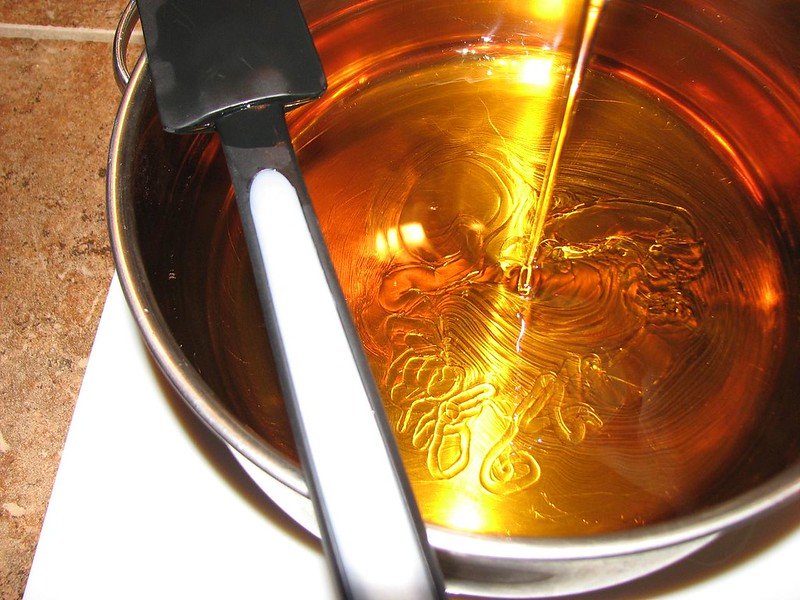Have you ever looked at the corn syrup bottle in the back of your refrigerator drawer and wondered: is corn syrup gluten-free?
Corn syrup is a widely used sweetening agent in numerous food products commonly ranging from baked goods to beverages. Its versatile properties and ability to enhance flavors make it a popular choice among food manufacturers.
However, with the increasing prevalence of gluten-related disorders and the growing interest in gluten-free diets, concerns have emerged about the gluten content in various food additives including corn syrup.
For individuals with celiac disease or non-celiac gluten sensitivity, avoiding gluten is essential to maintain their health and well-being.
In this article, we will learn about this super interesting sweeting agent, corn syrup and answer the most burning question: is corn syrup gluten-free? We’ll explore its varieties and most importantly, its gluten-free status.
Buckle up yourself and let’s find out about the gluten-free status of your favorite corn syrup bottle.
What is corn syrup?
Corn syrup is a viscous sweetener derived from corn starch. It is created through a process that involves breaking down corn starch into simpler sugars, primarily glucose.
The production of corn syrup involves treating cornstarch with enzymes which break down the starch molecules into smaller fragments, resulting in a syrupy consistency.
Depending on the desired sweetness and thickness, corn syrup may undergo further processing to alter its sugar content.
It is widely used in the food industry as a sweetening agent, and its neutral taste makes it an ideal additive for a wide range of products including candies, desserts, baked goods, and beverages.
Its ability to prevent crystallization and improve texture in foods has led to its widespread application in various culinary creations.
Additionally, corn syrup serves as a key ingredient in food manufacturing, playing a vital role in enhancing flavors and providing a consistent texture in many processed products.
Is corn syrup gluten-free?
Yes, corn syrup is gluten-free. It is derived purely from corn starch which does not contain gluten at all.
The production process of corn syrup involves breaking down the corn starch into simple sugars like glucose, resulting in a sweet and thick liquid.
Since gluten is a protein found in wheat, barley, and rye, and corn is not related to these grains therefore, corn syrup is considered safe for individuals with celiac disease or gluten sensitivity.
What varieties of corn syrup are available in the market?
In the market, you can find several varieties of corn syrup, each with different properties and applications. The main types of corn syrup include:
- Light Corn Syrup: This is the most common type of corn syrup and is often used as a sweetener in various recipes. It has a clear, light color and a milder flavor compared to other varieties. Light corn syrup is primarily composed of glucose, making it less sweet than other syrups with added fructose.
- Dark Corn Syrup: Dark corn syrup has a deeper color and a more robust flavor compared to its lighter counterpart. It is made by adding molasses or caramelized sugar to the light corn syrup, giving it a richer taste. Dark corn syrup is commonly used in recipes where a stronger, more distinct flavor is desired, such as in pecan pie or gingerbread cookies.
- High Fructose Corn Syrup (HFCS): HFCS is created by converting some of the glucose in corn syrup into fructose through enzymatic isomerization. This process increases its sweetness, and it is often used as a sweetener in the food and beverage industry. HFCS is available in various ratios of fructose to glucose, such as HFCS 55 (55% fructose) and HFCS 42 (42% fructose).
- Organic Corn Syrup: Organic corn syrup is produced from organically grown corn without the use of synthetic pesticides or fertilizers. It is a choice for individuals who prefer organic products.
- High Maltose Corn Syrup: High maltose corn syrup is made by further breaking down corn syrup into maltose, a disaccharide composed of two glucose molecules. It is commonly used in the brewing industry and as a thickener in certain food applications.
- Reduced-Calorie Corn Syrup: This variety of corn syrup contains less sugar and calories than regular corn syrup. It is often used as a lower-calorie alternative in certain recipes and food products
Is high fructose corn syrup gluten free?
Yes, high fructose corn syrup (HFCS) is gluten-free. HFCS is a sweetener derived from corn starch and is produced through enzymatic processes that convert some of the glucose in corn syrup into fructose. Since it is made from corn which is naturally gluten-free, HFCS does not contain gluten.
Conclusion
Corn syrup is a widely used sweetener in the food industry known for its versatility and ability to enhance flavors. While it is gluten-free and safe for most individuals, moderation is key due to its high sugar content.
For those with specific dietary needs or concerns, exploring gluten-free alternatives like honey, maple syrup, or agave nectar can be an excellent way to maintain a diverse and healthy diet while still enjoying sweet treats.
Patti began her writing career as a staff writer for the South Florida Sun Sentinel. Still based in Florida, Patti serves as editor for Fort Lauderdale on the Cheap. She regularly writes about environmental, home improvement, education, recycling, art, architecture, wildlife, travel and pet topics.

